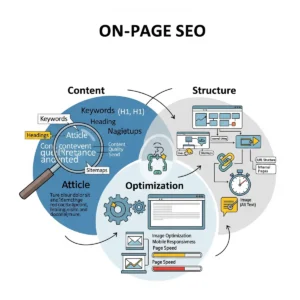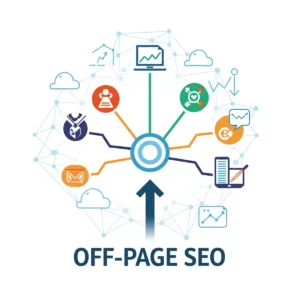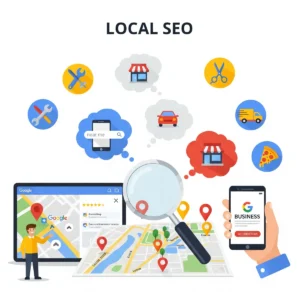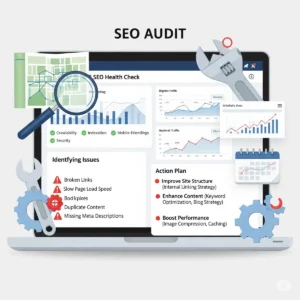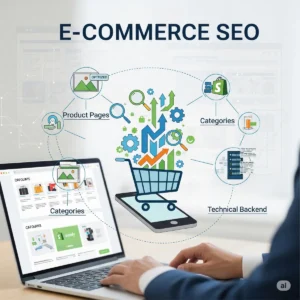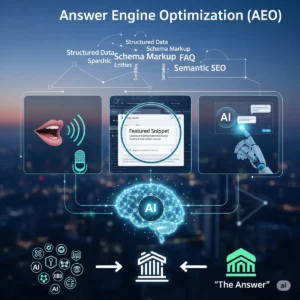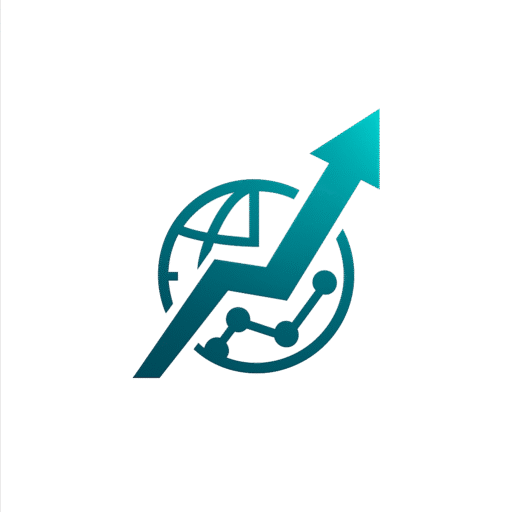SEO and Key areas to improve a website’s visibility
From my own campaigns, I’ve learned that securing a spot in Google’s rankings isn’t about one magic trick—it’s about working on multiple aspects simultaneously. You need to build a winning mix of technical SEO, on-page SEO, and user experience (or SXO), while your off-page SEO focuses on a strong backlink strategy to strengthen your position. A website that combines these areas effectively can secure lasting visibility and outperform competitors year after year.
What is Off-Page SEO?
- Off-page SEO covers all actions done outside your website to improve its ranking in search engine results.
- It includes backlinks—links from external sites pointing to your pages—that help optimize authority.
- Brand mentions on social media and other websites can also make your site earn high-quality exposure.
- Positive mentions signal to search engines that your site is relevant and trustworthy, boosting its search results position.
The difference between On-Page and Off-Page SEO
| On-Page SEO | Off-Page SEO |
| SEO like a hockey team with offense here focuses on your site | SEO like a hockey team with defense focuses on building reputation |
| Optimizing title tags, meta descriptions, heading structures (Hn) | Works on external factors like backlinks, link building, digital branding |
| Improves content quality, technical performance, and user experience under your control | Boosts authority through other websites and search engines |
| Sends the right signals to Google | Enhances credibility and helps in dominating search results |
| Creates an optimized site | Increases trust from search engines through off-site actions |
The importance of Off-Page SEO
| Aspect | Details |
| Off-page SEO | Helps search engines assess a website’s quality and relevance |
| Google & Bing | Use algorithms to determine rankings based on multiple factors |
| Backlinks | Both quality and quantity influence how a site can rank higher |
| Search results | Strong off-page signals improve visibility and credibility |
| Digital landscape | Essential for standing out and competing effectively online |
Local SEO
Local SEO is a branch of off-page SEO that focuses on optimizing a local business for better online reputation and visibility in Google and other search engines. It involves leveraging tools like Google Business Profile (formerly Google My Business, GMB) and Google Maps to appear in search results for local queries. Successful local SEO depends on consistency in contact details such as Name, Address, Phone number (NAP), accurate local citations, and online mentions across business directories like Yellow Pages, Yelp, and industry-specific websites. Using social media platforms like Facebook and LinkedIn, along with recommendations from local blogs and discussion forums, sends positive signals to search engines, boosting local visibility and attracting potential customers. An optimized local SEO approach ensures accurate and harmonized information, improves brand reputation, builds citations and backlinks from reputable websites, and often requires the expertise of a skilled local SEO agency to achieve enhanced credibility and ranking higher in online directories while strengthening local presence.
Key Points:
- Focuses on local business visibility through off-page SEO.
- Use Google Business Profile, GMB, and Google Maps to target local queries.
- Maintain consistency in NAP (Name, Address, Phone number).
- Gain local citations and online mentions from business directories like Yellow Pages, Yelp, and industry-specific websites.
- Leverage Facebook, LinkedIn, and local blogs for positive signals.
- Boosts local visibility, credibility, and attracts potential customers.
- Build citations and backlinks from reputable websites.
- Requires optimized local SEO and sometimes local SEO agency expertise.
Backlink : What is it?
A backlink, also known as an inbound link or hyperlink, is a connection from one website to another that points users and search engines toward your content. In off-page SEO, a strong backlink strategy is essential for building relevance, popularity, and authority in your industry. Search engines view high-quality backlinks as signals of recognition, helping a site improve rankings and visibility. The more relevant and reputable the links, the more they contribute to your online success.
Key Points:
- A backlink is also called an inbound link or hyperlink.
- It connects one website to another and points to your content.
- Part of off-page SEO and an important ranking factor.
- Helps improve relevance, popularity, and authority.
- Search engines use high-quality backlinks as trust signals.
- Builds recognition in your industry.
The value of different types of backlinks
Backlinks play a major role in helping your site rank higher in SERPs. A high-quality backlink, especially an authoritative backlink, can be incredibly powerful in boosting search performance. On the other hand, low-quality links often fail to deliver positive results and can even harm your rankings. Understanding the characteristics of each type helps you focus on building a stronger, more trustworthy link profile.
Key Points:
- Backlinks influence how well your site ranks in SERPs.
- High-quality backlinks and authoritative backlinks are powerful ranking signals.
- Low-quality backlinks can be ineffective or harmful.
- Knowing the characteristics of each link type is crucial.
Dofollow and nofollow backlinks
| Dofollow Links | Nofollow Links |
| Pass SEO value and SEO juice to your site | Do not pass direct SEO value or SEO juice |
| Help improve Google rankings by signaling that your site is trustworthy | Less impact on Google rankings |
| Contribute directly to search engine rankings and authority | Still useful for traffic and brand visibility |
| Strengthen your backlink profile and can drive traffic with strong intent and context | Improve backlink profile diversity |
| Often come from authoritative and relevant sources | Often used when linking to sources without full endorsement |
Sponsored backlinks
Sponsored backlinks are paid links placed on websites to promote your content and improve brand’s visibility. According to Google, these links must include the rel=”sponsored” attribute to avoid being flagged for manipulative practices. When used strategically on influential websites within your industry, they can effectively target the right audience. However, overuse or improper implementation with the intent to manipulate rankings can harm your SEO efforts.
UGC (User-Generated Content) backlinks
UGC backlinks come from user-generated content such as forums, blog comments, and collaborative platforms. Google requires the rel=”ugc” attribute to mark these backlinks as a UGC signal. They often indicate an active, engaged community around a brand, where users share content and make contributions. While these links can add diversity, without proper moderation they may lead to spam or low-quality links.
Get Free SEO Audit
FAQs About Off-Page SEO:
How to do SEO off-page?
To do off-page SEO, follow a checklist that includes earning high-quality backlinks and reputable links to boost authority, gaining brand mentions and citations, building trust signals through customer reviews and testimonials, and continuously monitoring, improving, and optimizing your efforts for better search engine performance.
How to measure off-page SEO?
- Evaluate backlink quality and backlink quantity.
- Use tools like Ahrefs and Moz to analyze your backlink profile.
- Check your domain authority (DA).
- Monitor referral traffic in Google Analytics.
- Track social signals.
- Watch for brand mentions to gauge online visibility.
What are key off-page SEO factors?
- Referring domains and the number of quality sites linking to you.
- Link authority from high-trust sources.
- Anchor text relevance and optimization.
- Link relevancy to your niche or content.
- Social shares that amplify content reach.
- Reviews that build trust and influence rankings.
- Brand mentions across the web.
- Google Business Profile optimization for local visibility.
What are the 4 pillars of SEO?
Here are the 4 pillars of SEO:
- Technical SEO – Ensuring site structure, speed, and crawlability are optimized.
- On-page SEO – Optimizing elements like titles, meta tags, and headings.
- Content – Creating valuable, relevant, and well-structured information.
- Off-page SEO – Building authority through backlinks and external signals.
What are the 3 C’s of SEO?
Here are the 3 C’s of SEO:
- Content – The information and value you provide on your site.
- Code – The technical structure and optimization of your website.
- Credibility – The trust and authority your site earns online.
What is the SEO checklist?
Here’s the SEO checklist:
- Plan site structure for clear and logical navigation.
- Ensure responsive design for both desktop and mobile.
- Perform keyword research and apply optimization effectively.
- Use a clear header hierarchy (H1–H6) to organize content structure.
- Implement HTML5 semantic tags to define page structure.
- Design a user-friendly navigation menu for easy access.

